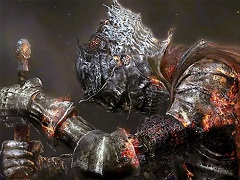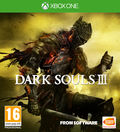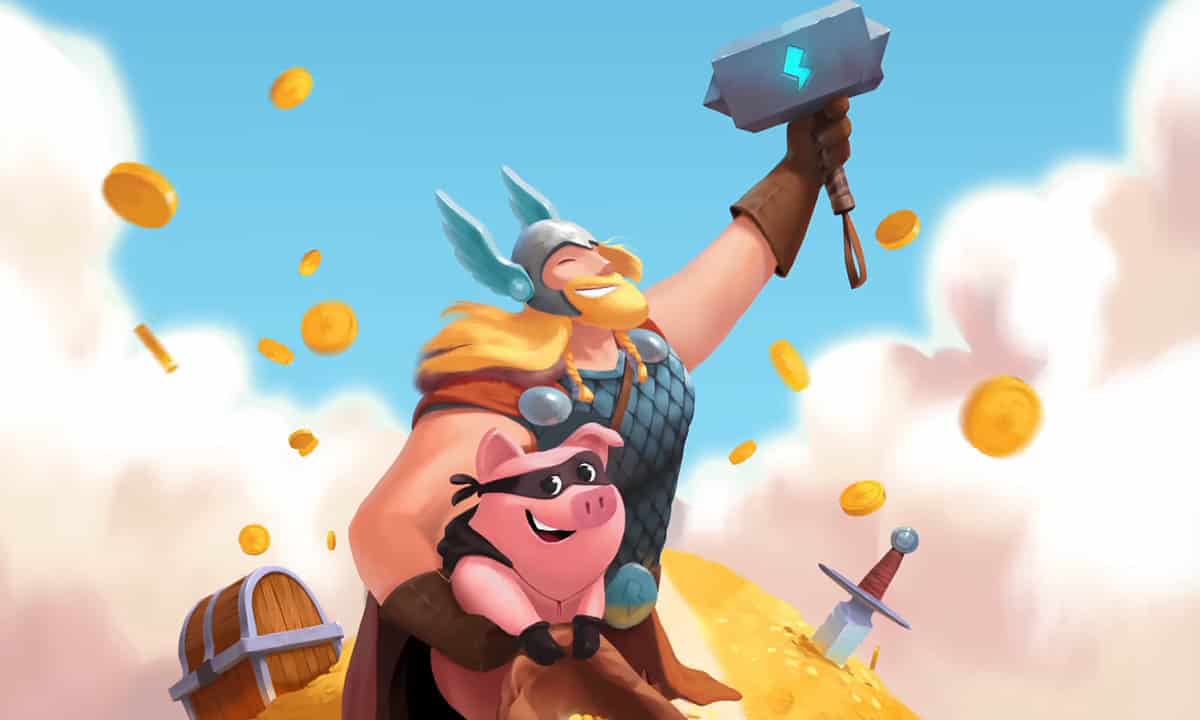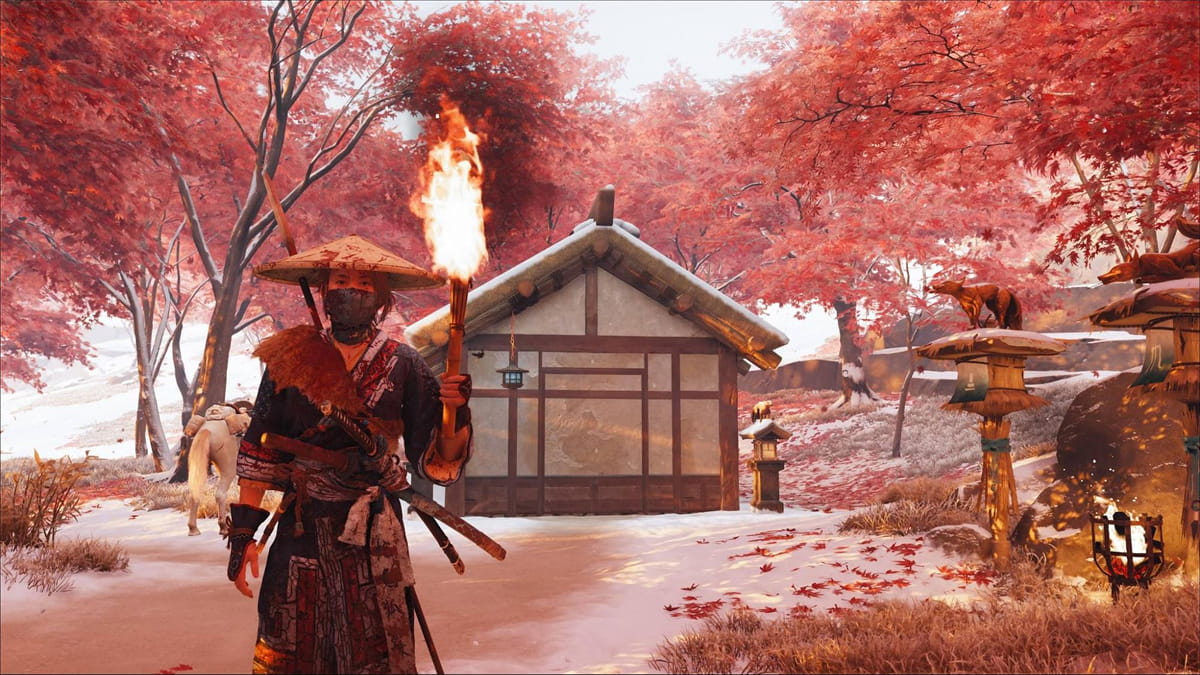You can trust VideoGamer. Our team of gaming experts spend hours testing and reviewing the latest games, to ensure you're reading the most comprehensive guide possible. Rest assured, all imagery and advice is unique and original. Check out how we test and review games here
This is it. The final fight. Everything in Dark Souls 3 has been working up to this moment.
The Soul of Cinder is the collected souls of everyone who has linked the flame throughout the history of Dark Souls, starting with Gwyn, and including the player character from the first game. It’s also the gnarly cover-boy for the game, and features in most of the promo material. It’s another cheat-y sort of fight, but it’s probably not the hardest you’ve had to face.
1. The approach
To get to the end fight you need to have killed all of the other Lords of Cinder – which includes your little pal Ludleth, by the way, although you’ll be happy to know that you can still transpose souls into weapons at his throne even after he’s gone. Once you’ve put Lothric’s head on his throne the Fire Keeper will walk towards the bonfire at the centre of the Shrine and you’ll get an interaction prompt there. A cutscene plays, and you’re transported to, duh duh dunnnnn… the Kiln of the First Flame.
When you appear there you’re in a mirror of Firelink Shrine, but completely darkened, and with much of it closed off (yes, this version is somehow different to, but also the same as, the original Firelink Shrine and the version of it in the Untended Graves). Go outside and marvel at the view of all the different kingdoms stacked on top of one another, like that bit in that Inception film you all liked where the city folded up. There’s a bonfire outside, and lighting it takes you to the Kiln of the First Flame bonfire. From here you can travel back to any of the others, if you’re not ready to fight the Soul of Cinder yet or if there are other bits you want to finish off in the game.
Guess what kind of damage the Soul of Cinder does? If you said “Ice!” then you are, of course, an idiot, although as part of its first phase the Soul of Cinder can cast a lot of sorceries too. Pyromancers are going to have to use dark pyromancies to do proper damage here, and the Soul of Cinder will also be damage fairly well by lightning, but only in its first phase. In the second phase it channels the soul of Gwyn, former Lord of Sunlight, so some lightning attacks come into the mix.
2. The Soul of Cinder’s first phase
The Soul of Cinder can be stunned with enough damage, but not stagger locked. In the first phase the Soul of Cinder cycles through four different methods of attack. These can come in any order, although it always starts with a longsword.
The longsword (which is recognisable as the coiled sword from Firelink Shrine) has a very aggressive moveset. You’ll get the best openings for attack after the Soul uses heavier attacks (which charge the sword with flame), overarm swings, or thrusts forward. The attacks can all be dodged around and through with the right timing, but do a lot of damage if they connect. It does, however, pay to be aggressive right back, because the Soul won’t switch to its next moveset until you’ve done enough damage to this one.
The pure caster form of the Soul of Cinder turns the sword upside down and uses it to cast all your favourite sorceries, notably a massive soulstream beam attack, which is telegraphed by power gathering in the hilt of the sword. This has a huge range on it, and strafes, but doesn’t last long, so if you can outrun it to the side or, even better, get behind the Soul of Cinder as it casts you’ll be fine. There are also some homing soul masses, which will continue to spawn (and can carry over into the next phase after the caster) and a soul greatsword that triggers if you get up close. Generally this is the easiest moveset to land damage on, since it has no dodge and moves slowly.
The Soul of Cinder also has a pyromancy build (that apparently has a lot in the dex stat too) which wields a curved blade as well as well as the pyromancy flame. In this form the Soul moves and attacks a lot faster, with backflips and 360 spins, but does less damage and is easier to stun or shield block than, for example, when it’s using the longsword. Be mindful that it can cast pyromancies from its left hand, meaning you can get hit with a flaming parry if you’re fighting up close or a fireball if you’re far away. The speed of this one can make it harder for ranged attacks to hit it, but on the other hand it won’t move towards you as aggressively as the other melee builds, so swings and roundabouts.
Finally in its repertoire is the lance build, which has a much longer range of attack and can charge, so ranged builds should stay on their toes. This moveset is very easy to dodge, however, if you keep moving and dodging to the right. You can apply the same sort of tactics you did when fighting Iudex and/or Champion Gundyr to good effect here, though the sting in the tail is that this version can use miracles, usually a shockwave out from itself. The Soul can heal itself in this form, which is very annoying, but the miracles are all obviously telegraphed.
3. The Soul of Cinder’s second phase
Once you’ve smashed the Soul of Cinder down to no health back away immediately. Its transformation into the second phase is accompanied by a very large area of effect fire explosion. After this you’ll be facing a Soul of Cinder that has the same moveset as Gwyn, the original Lord of Cinder from the first Dark Souls. This is, of course, unhelpful knowledge if you didn’t play the first Dark Souls.
This moveset comes with a more aggressive jump and a permanently flaming sword, so slashes with it have a larger hitbox. The soul can grab you with its offhand and then thrown you down in an explosion of fire, it can fire lightning bolts at you, and it can fire lightning bolts into the sky which, after a pause, rain down on you (the only way to avoid being hit by this is to continually dodge backwards when they start coming down, and at the very last second). This last spell will give you a few seconds to get hits in, but you might have to sacrifice taking the damage to do so. Depending on your health bar and estus this can be a fair trade off. You can also break the Soul’s poise in this phase, but its recovery is much quicker so you won’t have time to land a charged attack.
The openings for melee vs. ranged builds are very different here, and while melee players have more ranged players have safer ones. Attacks like the jump are a good one for melee players to bait from distance, because you can roll under it to attack from behind; for ranged users it means the entire gap you’ve built between you and the Soul is eaten up instantly. While melee users will have a short opening for attack when the Soul is casting lightning miracles, ranged attacks can take too long to take advantage.
The most devastating attack is a chained four hit combo followed by the same area of effect explosion that accompanied the transformation into this phase. This is telegraphed by the Soul holding the sword up and behind it, kind of like it’s holding a baseball bat, and charging it with fire. When you see this happening back up, and keep backing up, because if you get caught in it you’ll be there a while. So will the Soul though, so while melee builds won’t be able to approach at this point, ranged ones can get a bunch of damage in for free while the Soul of Cinder flails at nothing. If you’re playing it safe as a ranged build you can just wait for the Soul to dust this move off.
The second phase isn’t as hard as the first. It’s moveset is more predictable and many of the heavy attacks are easy to avoid, plus it has less health. As long as you can carry a decent amount of estus over from the first phase you’ll be fine.
And now you’ve finished the game! You’re free. You can live your life again. No, stop. What are you doing? Don’t start NG+!
Buy the official Dark Souls 3 Guide now.







